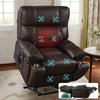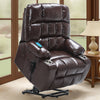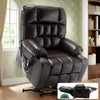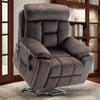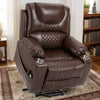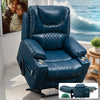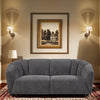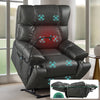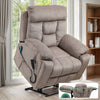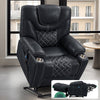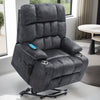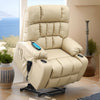Understanding Your Recliner: Materials and Mechanisms
Choosing the Right Recliner Chair
When selecting a recliner chair, consider the materials and build quality. Leather recliners are durable and easy to clean. Fabric options offer more variety in colors and textures. Look for a sturdy frame, ideally made of hardwood or metal. Check the weight capacity to ensure it suits your needs. Pay attention to the cushioning material. High-density foam provides better support and lasts longer. Consider the size of the recliner in relation to your room. Measure your space carefully before making a purchase. Think about additional features like massagers or cup holders. These can enhance your comfort but may require more maintenance.

The Mechanism Behind Recliner Comfort
Recliners use a lever-operated mechanism to change positions. This system includes springs, cables, and a footrest. The backrest and footrest move together to create a comfortable reclining position. Some models offer multiple positions, including fully flat for sleeping. Advanced recliners may have electric motors for smoother operation. These require proper care to maintain their functionality. Regular lubrication of moving parts is essential for smooth operation. Check the mechanism periodically for signs of wear or loose components. Understanding how your recliner works can help you spot potential issues early. This knowledge is crucial for maintaining your chair's comfort and longevity.
The Importance of Maintenance: Keeping Your Recliner in Top Condition
Routine Cleaning for Your Recliner Chair
Regular cleaning is vital for maintaining your recliner's appearance and hygiene. Start by vacuuming the chair weekly to remove dust and debris. Pay special attention to crevices and seams where dirt can accumulate. For fabric recliners, use a fabric cleaner suitable for the material type. Test any cleaner on a hidden area first to avoid discoloration. Leather recliners require specific leather cleaning products to maintain their finish. Wipe down leather surfaces with a damp cloth, then apply leather conditioner. Clean spills immediately to prevent staining or damage to the material. For stubborn stains, consult a professional cleaning service. Regular cleaning not only keeps your recliner looking good but also extends its life.

Addressing Wear and Tear: When to Consider Repairs
Over time, recliners may show signs of wear and tear. Common issues include sagging cushions, torn upholstery, or malfunctioning mechanisms. Inspect your recliner regularly for any signs of damage. Loose or squeaky joints can often be fixed with tightening or lubrication. Torn upholstery may require patching or reupholstering by a professional. Sagging cushions can sometimes be rejuvenated by adding new padding. If the reclining mechanism fails, it may need replacement parts. Consider the age and overall condition of the chair when deciding on repairs. Sometimes, extensive repairs may cost more than replacing the recliner. For valuable or antique recliners, professional restoration might be worth the investment.
Enhancing Longevity: Preventive Measures and Best Practices
Selecting the Right Cleaning Products for Your Recliner
Choosing appropriate cleaning products is crucial for maintaining your recliner. For fabric recliners, use cleaners specifically designed for upholstery. Avoid harsh chemicals that can damage the fabric or fade colors. Leather recliners need special care with leather-specific cleaners and conditioners. Never use regular soaps or detergents on leather as they can dry it out. For wooden parts, use a gentle wood cleaner to maintain the finish. Microfiber recliners require special microfiber cleaning solutions. Always read the manufacturer's care instructions before using any product. When in doubt, opt for mild, pH-neutral cleaners. Natural cleaning solutions like vinegar and water can be effective for light cleaning. Regular use of appropriate cleaning products can prevent build-up and extend the life of your recliner.

Tips for Assembly and Disassembly to Maximize Durability
Proper assembly and occasional disassembly can help maintain your recliner's durability. When assembling a new recliner, follow the manufacturer's instructions carefully. Use the correct tools to avoid damaging components during assembly. Periodically check and tighten all bolts and screws to prevent looseness. If you need to move the recliner, consider partial disassembly to make it easier. This can prevent strain on joints and mechanisms during transport. When disassembling, keep track of all parts and their positions. Take photos or notes to help with reassembly later. Handle electrical components with care if your recliner has power features. Clean hard-to-reach areas during disassembly for thorough maintenance. Proper assembly and careful handling during moves can significantly extend your recliner's lifespan.








